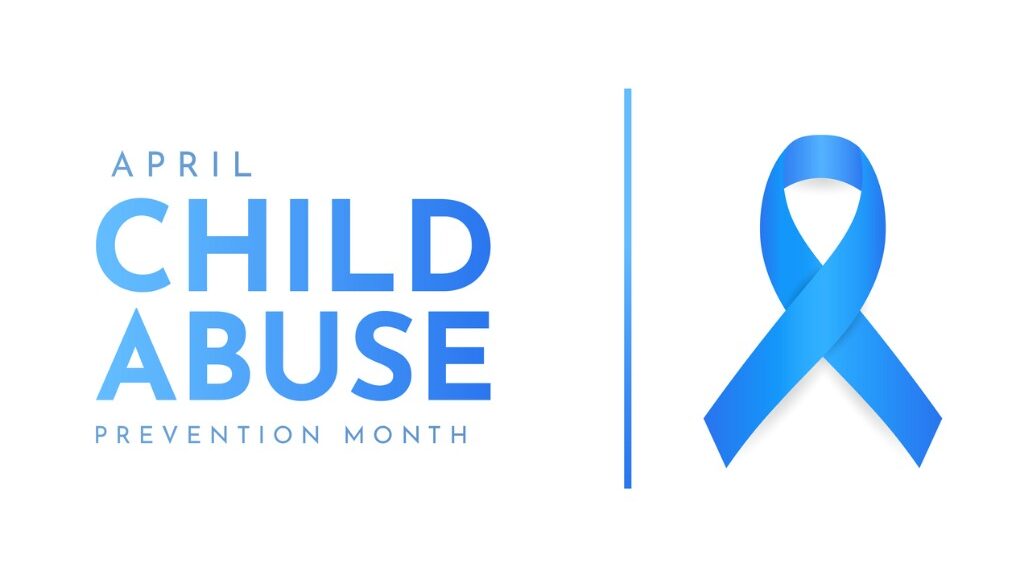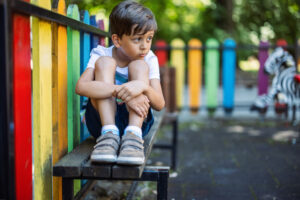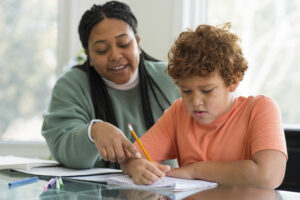Child Abuse Prevention: What Can I Do?

National Child Abuse Prevention Month brings a heightened awareness of child abuse during April, but children need our advocacy year-round. KVC Health Systems focuses on preventing child abuse and neglect through our dedicated work to strengthen families. Together, we can multiply our impact to promote the physical, social, mental and emotional well-being of our children.
Curious about the role you play in helping to prevent child abuse? The answer is simple. By understanding the different kinds of abuse, recognizing the signs of child abuse and taking action when help is needed, you can be a powerful advocate for the children around us.
Understanding Different Types of Abuse
 Child abuse and neglect contribute to a real, ongoing health crisis in the United States and worldwide.
Child abuse and neglect contribute to a real, ongoing health crisis in the United States and worldwide.
Adverse childhood experiences can have a long-term effect on the health of a young individual and can continue into adulthood if the situation is not properly addressed.
Current data show that of the 3.1 million child abuse cases investigated, 76% were victims of neglect, 16.5% were physically abused, 9.4% were sexually abused and 0.2% were victims of sex trafficking. With this information, it’s clear that many forms of abuse are prevalent. Here are the most common types of child abuse:
- Emotional abuse: Mental or emotional abuse typically aims to impact a child’s well-being, self-esteem and self-worth. This can include name-calling, rejection, withholding affection, shaming, diminishing, emotional manipulation or threatening a child.
- Neglect: Abandonment and neglect involve a caregiver or family member withholding basic needs. These needs can be physical or emotional, like food, clothing, shelter, education or medical care.
- Physical abuse: Physical abuse is typically categorized as intentional and physically hurtful actions, resulting in the injury of the child. Hitting, kicking, burning, shaking and other forceful actions are examples of physical abuse.
- Sexual abuse: Sexual abuse is defined as intentionally forcing a child to engage in (or exposing a child to) sexual acts, including penetration, fondling and exposure of body parts. Unwanted sexual touch is also sexual abuse.
Recognizing the Signs of Child Abuse
Knowing and understanding the types of abuse is only the beginning when it comes to preventing abusive situations. Learning the signs of a child in a potentially dangerous position can go far in the advocacy and prevention of abuse.
Recognizing the signs of child abuse often means that adults must increase their awareness of the children around them and their behavior, to notice when something has changed. These signs can include:
- Unexplained injuries. Physical injuries without an explanation or with an unconvincing story about its occurrence may indicate intentional harm to a child.
- Behavioral changes. The appearance of anxiety, depression, aggression, irrational fears, regression (returning to an earlier behavior) and/or withdrawal from participating can all be signs of abuse. On a similar note, withdrawal from longtime friends or prior interests can also be a sign.
- Fear of returning home. Anxieties or fears about leaving school or going somewhere alone with an abuser are likely in abused children.
- Changes in eating habits. Sometimes developed as a coping mechanism, binge eating or appetite loss can indicate abuse. This can result in noticeably gaining or losing weight.
- Changes in school performance. Trouble concentrating at school or frequent absences could be a sign of abuse. Neglect may also be a potential cause of frequent absences.
- Lack of personal hygiene. Trauma and abuse might present themselves with neglect of personal hygiene. Dirty clothes, unbathed or an overall messy outer appearance can indicate that a child’s home life is in disarray.
- Engaging in risky behavior. For school-aged children and teens, using or experimenting with alcohol and other drugs could be a sign of abuse. Other risky behavior might include hanging out with inappropriate “friends” or sneaking out.
- Displaying inappropriate behavior. Children who have been sexually abused may display sexual behaviors or use foul and explicit language.
Taking an Active Role in Prevention
Perhaps the most important way to eliminate child abuse is by taking an active role in preventative efforts. An active role might be proactive or reactive, but the goal is to protect a child in need. A proactive role can be as simple as being a friend or volunteering. It’s a simple way to positively impact a child’s life, and perhaps relieve stress for the parent that might otherwise lead to abuse.
 A reactive role is noticing when abuse is already occurring, and stepping in to prevent further harm to a child. Calling the proper authorities when abuse is suspected is always the best option. Organizations like KVC are actively helping children in crisis while also providing the family with resources and care to heal and thrive.
A reactive role is noticing when abuse is already occurring, and stepping in to prevent further harm to a child. Calling the proper authorities when abuse is suspected is always the best option. Organizations like KVC are actively helping children in crisis while also providing the family with resources and care to heal and thrive.
Advocacy can take place every day through small gestures. Here are a few ways you can help prevent child abuse in your community:
- Offer to babysit. By offering to babysit for a friend or neighbor, you can help a parent relieve stress and give them a break from their normal routine.
- Set a good example. Children look up to adults around them. Children will follow your actions and learn from you by setting a good example. Make sure you’re showing them right from wrong.
- Befriend a parent. Sometimes parents and caregivers need an outlet. Lending an ear and listening to a new parent can help. Giving parents an outlet to express anger and frustration can help ease tensions.
- Volunteer. Volunteer your time to organizations such as KVC Health Systems or Prevent Child Abuse, either through parenting support classes, drug abuse prevention and treatment programs or foster care support events. Educate yourself and others on how to prevent child abuse.
- Mentor a child. Older children and adults can mentor younger children by spending quality time together. Mentoring has benefits like helping the child build stronger relationships, increasing confidence and self-esteem, reducing their risk of addiction, improving behavior and school performance, increasing college enrollment rates and choosing a healthier lifestyle as they grow.
- Become a foster parent. Fostering a child is taking on a big responsibility! But if you’re ready to leap, YOU can provide a child with a safe place to call home and make a lasting impact in their life. KVC is always looking for caregivers wanting to share their home with children in need. Learn more about becoming a foster parent.
KVC’s Role in Child Abuse Prevention
KVC Health Systems is dedicated to the well-being of our community’s children, teens, and families. Our team provides compassionate care through mental health treatment, in-home family support, foster care, adoption and children’s mental health hospitals. Our services and programs use a trauma-informed system to create a safe place for clients to heal.
When families are in crisis, KVC works with the children and family members and provides the necessary resources to promote healing. Much of our work is preventing and healing the abuse and neglect within the families they serve. If you suspect child abuse or neglect, call 1-800-4-A-CHILD to ensure they get the help they need.





